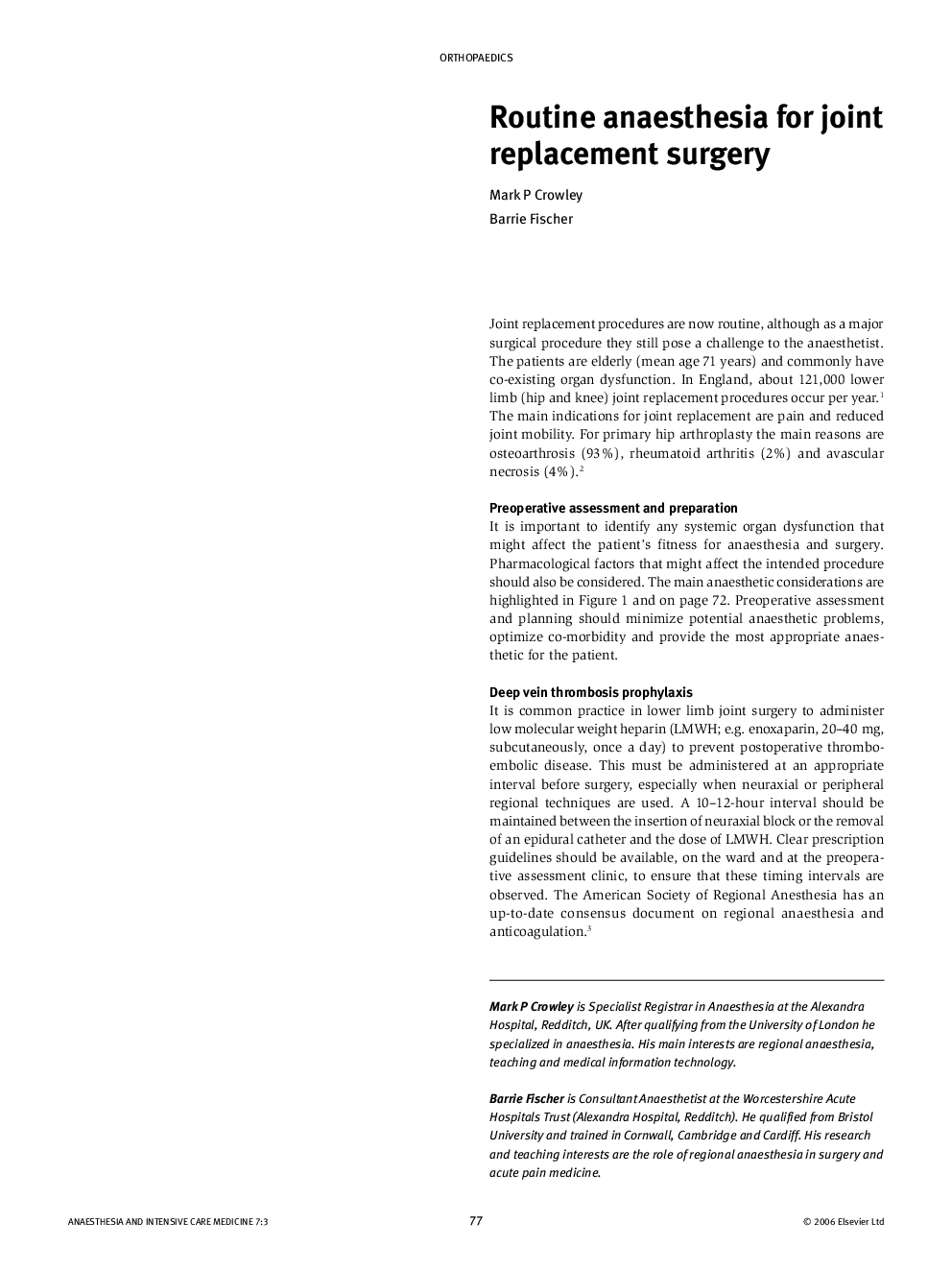| Article ID | Journal | Published Year | Pages | File Type |
|---|---|---|---|---|
| 2743945 | Anaesthesia & Intensive Care Medicine | 2006 | 4 Pages |
Although now routine, major joint replacement surgery of both the upper and the lower limb represents a challenge to anaesthetists because of the relatively elderly age group of patients, their attendant co-morbidity and the complexity of the surgery. Preoperative assessment and optimization of each patient's medical condition is important for a successful outcome of surgery, which can be prolonged with significant perioperative blood loss. Surgery is associated with high pain intensity in the early postoperative period, and effective analgesia (whether based on systemic opioids or regional analgesia) is necessary for up to 24 hours before patients can mobilize comfortably, with mild to moderate levels of pain. Joint revision surgery is now common when primary joint replacements reach the end of their expected lifespan. Revision surgery introduces additional complexity and increases perioperative morbidity and the duration of surgery, making anaesthesia for such operations difficult. Both general and regional anaesthesia techniques are in widespread use. General anaesthesia and a local anaesthetic block for optimal perioperative analgesia is recommended for shoulder, elbow and knee replacements, whilst spinals and epidurals may be used as either the sole technique or in combination with a light general anaesthetic for hip replacement. There is evidence that central neural blockade is associated with a reduction in morbidity and mortality for lower limb joint replacement, and that functional outcome may be improved for both upper and lower limb surgery if a regional block technique is used to provide postoperative analgesia.
